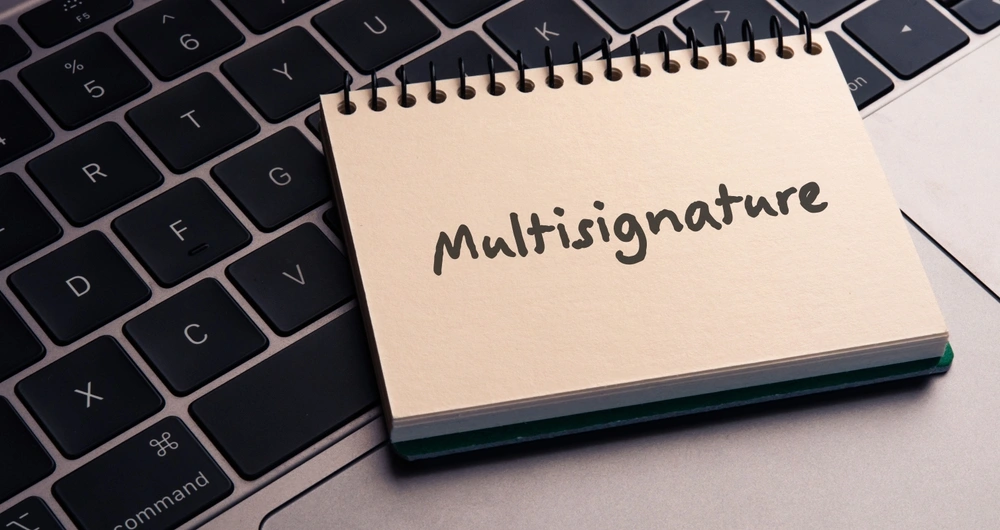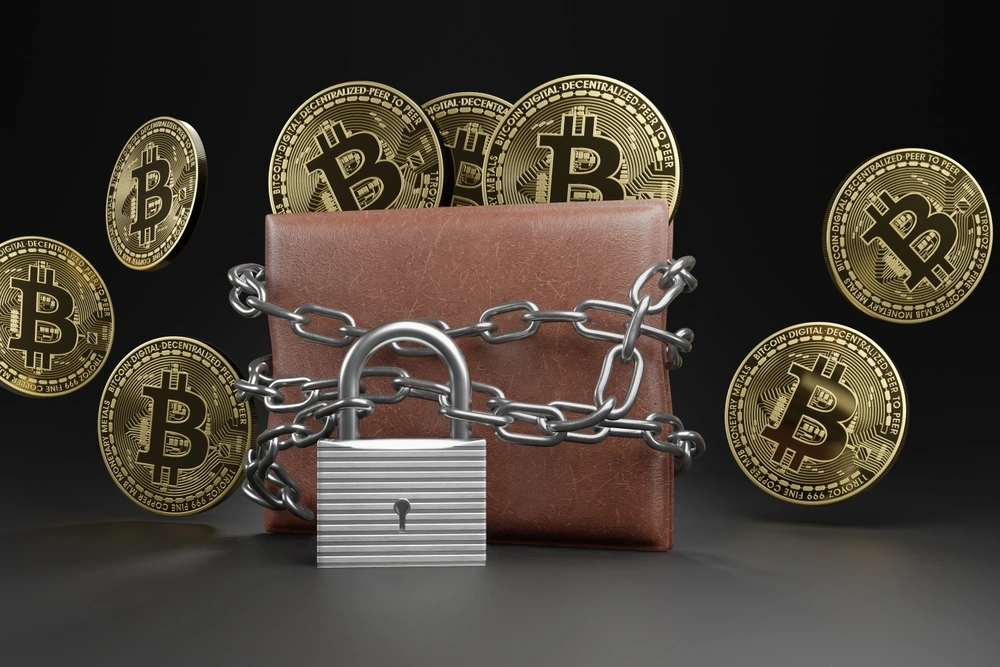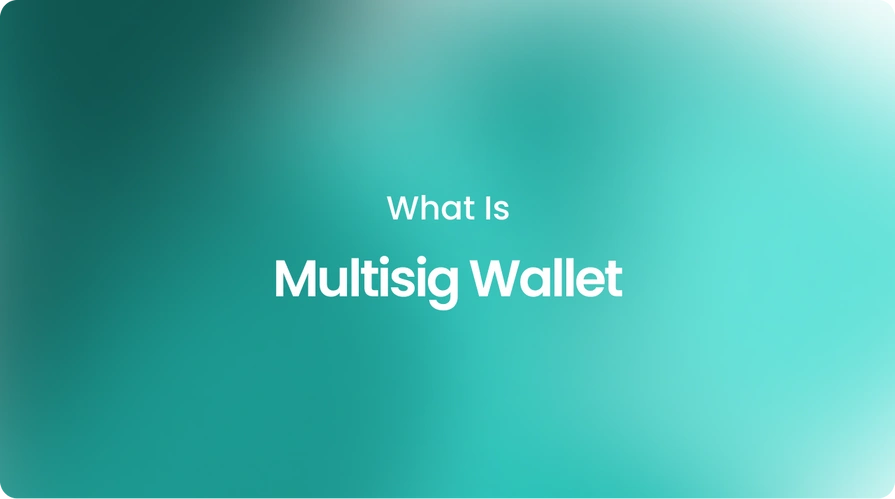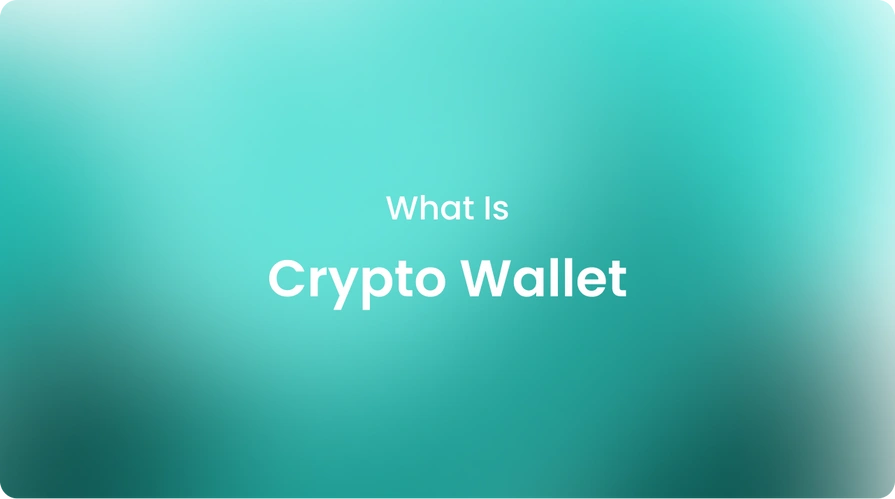Security should always be your top priority, regardless of your level of experience with cryptocurrencies. With millions of dollars lost each year due to crypto hacks and theft, it's critical to safeguard your digital assets, especially with multisig wallets.
In this blog, we'll introduce multisignature, or "multisig" wallets, as a powerful security option and explore their key features and benefits. By the end, you'll understand why multi-signature wallets are becoming the preferred choice for those holding significant crypto balances.
A multisig wallet differs from a traditional or "single-signature" wallet in that it requires more than one key to authorize outgoing transactions. With a single-signature wallet, anyone possessing the private key can spend the funds.
In contrast, a multisig wallet might require two, three, or even more private keys and their corresponding public addresses to sign off on a transaction before it's sent to the blockchain for confirmation.
How does a multi-signature wallet work?
When a transaction is initiated from a multisig wallet, it remains pending until it receives the set number of signatures. For example, in a 2-of-3 multisignature setup, there are three public addresses, but only two signatures are needed to release the funds.
This ensures redundancy in the event of a lost or compromised signature. The transaction only proceeds when two separate private keys sign off.
Types of multisignature wallets
The main types include 2-of-2, 2-of-3, and 3-of-5 multisignature configurations. However, the possible combinations are almost limitless. According to statistical data, 2-of-3 multi signatures are by far the most popular setup, accounting for 85% of multisig addresses on the Bitcoin blockchain.
Advantages and disadvantages of multisignature wallets
As we describe in the first few sections, multisignature wallets provide enhanced security compared to traditional single-signature setups by requiring confirmations from separate devices or parties before funds can be spent.
However, this additional security does come at the cost of reduced portability and convenience. Receiving funds also requires multi-party approval. Moreover, the loss of one private key necessitates the use of backup keys to maintain access to the funds.
What is an example of a multisignature wallet?
Cryptobunq is a crypto-friendly digital bank offering various services in crypto and blockchain. It provides multi-signature wallet functionality through its custody and wallet services. If you want to learn more about wallets, make sure to check out “crypto wallets” and “types of crypto wallets.”.
There are also other services that you can benefit from Cryptobunq, such as crypto checkout and invoicing, crypto batch payments, crypto exchange API, and more. As a one-stop-shop crypto service provider, CBQ combines expert solutions all in one place.

Multisig wallet use cases and goals
Multi-signature setups aim to prevent theft that can occur when a single private key compromise is enough to drain attached funds.
By requiring confirmation from separate parties or devices, partial key exposure no longer puts the entire balance at risk. Institutions also favor multisig as it allows dividing responsibilities and introducing checks and balances to payment authorization workflows.
Multisig wallets are well-suited for organizations holding substantial crypto reserves. For example, a company may divide private keys between its CEO, CFO, and a board member as cosigners. They're also useful for families holding cryptos jointly or exchanges providing extra security for VIP accounts.
Multi-signature wallets vs. other crypto wallets
In comparison to single-signature wallets, which require access to just one private key, multisignature setups have the additional security benefits we've explored. Hardware wallets also provide offline storage but have limitations around fund access portability.
Meanwhile, custodial services control your private keys, which eliminates self-custody advantages. As such, multi-signature wallets strike an ideal balance between security, control, and accessibility.
Where do single-signature crypto wallets fall short?
With traditional single-key crypto wallets, safety strictly depends on maintaining full control of the one private key. Individual oversight failures or targeted hacks have unfortunately led to the complete depletion of prominent exchanges and personal wallets far too often.
Multisignature architectures address these weaknesses by compartmentalizing risk across multiple private keys. Therefore, they are more beneficial for security reasons.
Are multisig wallets safe?
When used responsibly, multisig wallets can offer bank-grade levels of protection against the threats plaguing single-key crypto storage. However, one should distribute sensitive key material judiciously across separate, disconnected devices and keep it offline as much as possible.
Businesses also benefit from leveraging providers like Cryptobunq that implement institutional-grade security practices around multisignature infrastructure and key handling. When done right, multisig greatly reduces the risk of theft while allowing ownership retention.

Do I need a multisig wallet?
For most ordinary users simply dabbling in small-balance crypto investments, a single-signature wallet remains reasonably secure when backed by responsible password and key protection habits.
However, if you're dealing with large crypto holdings equivalent to a lifetime of savings, a multisignature wallet brings an extra layer of safety against both human errors and advanced threats.
Multisignature is practically a necessity for institutions, exchanges, and any operations handling millions of dollars worth of digital assets.
Why use a multisig wallet?
Multisignature architectures distribute responsibility, reduce single points of failure, and force shared authorization before funds can be spent, all of which translate to dramatically stronger security compared to traditional single-key wallets.
They allow splitting sensitive key material across separate physical locations, safeguarding against loss or compromise at any single point. For those with substantial crypto exposure or institutional needs, multisig provides an optimal risk-adjusted solution well worth the minor extra configuration overhead.
How to set up a multisignature wallet?
Setting up a multisig wallet requires coordinating public addresses and private keys across multiple devices or parties. Multisig brings unrivaled safety to valuable crypto funds with the even distribution of keys among trusted parties.
Wallet service providers like Cryptobunq offer easy-to-use multisignature solutions, removing complex technical burdens. Make sure to check out “How to set up a cryptocurrency wallet?” and “How to recover and secure a crypto wallet?” for detailed information and strategies.
The bottom line
Multisignature architectures offer the strongest available protection for cryptocurrency holdings, distributing risk across separate signing parties or devices.
Whether you're an individual investor, family office, or enterprise, a multisignature wallet can safely secure substantial digital wealth with its redundant authorization model.
Using services from experts like Cryptobunq takes the technical complexity out of multisig management while still allowing self-custody benefits. For those with high crypto exposure, multisig wallets are now essentially compulsory to responsibly safeguard digital assets against today's advanced threats.
If you want to benefit from the advantages of multisig wallets for your projects, CBQ is here for you with expert WaaS services. Explore our case studies and contact us today to learn more about our secure crypto and blockchain solutions!














